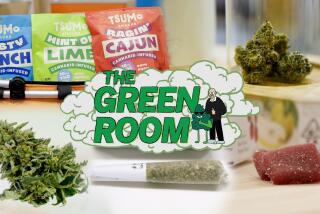Low-sodium products on the rise
- Share via
Looking to take a pass on at least some salt? A growing number of food companies are coming out with lower-sodium products.
Food giant ConAgra recently introduced a line of Orville Redenbacher’s popcorn, Smart Pop!, with 30% less sodium than the original recipe; Del Monte, in September, launched Del Monte’s 50% Less Salt vegetables, a new line of canned vegetables; and Pepperidge Farm, this month, brought out eight reduced-sodium breads, including Original White and Oatmeal, each containing at least 25% less sodium than the original recipe.
“Quite a few companies have, for years, offered foods with salt taken out,” says Julie Upton, a registered dietitian based in San Francisco and New York City. “What’s different about current efforts is that some companies are using sea salt varieties that have lower sodium than table salt -- but not all sea salt is lower in sodium -- and, in some cases, proprietary manufacturing processes to make lower-sodium foods that taste, if not identical to the original recipe, good-tasting in their own right.”
Fueling the interest -- beyond baby boomers with high blood pressure diagnoses -- is a petition to the Food and Drug Administration by the Washington, D.C.-based Center for Science in the Public Interest. Among the requests in the petition: that the FDA revoke table salt’s status as “generally recognized as safe,” its current designation, and limit the amount of sodium allowed in some packaged food categories.
Almost all major food companies have recently introduced at least one lower-sodium food item and have plans to roll out more. The number of new products with a lower-salt or lower-sodium claim doubled between 2002 and 2007, from 102 such claims in 2002 to 209 such claims in 2007, according to a February report on sodium content in foods from Packaged Facts, a market research firm in Rockville, Md.
Packaged Facts predicts that the number of food products with lower-sodium or lower-salt claims will continue to grow and spread beyond the current popular categories of soups and canned vegetables.
But you may not want to get too attached to every new lower-sodium product. Six months ago, Frito-Lay, owned by food giant PepsiCo, launched a line of salty snacks called Pinch of Salt that included lower-sodium versions of Lay’s potato chips and Fritos corn chips, with 30% to 50% less sodium than the original chips. It turned out that a pinch may be too little for Americans. Aurora Gonzalez, a spokeswoman for PepsiCo, says the line was recently discontinued.
Still, the demise of the Pinch of Salt chips doesn’t appear to be a bellwether for the category. Pam Becker, a spokeswoman for Progresso Soups, says the company’s line of lower-sodium soups introduced two years ago “had exceeded expectations.”
Companies with significant lower-sodium introductions in the last two years, according to the Packaged Facts report, include Hormel’s Spam 25% Less Sodium, Hormel’s No Salt Added Breast of Chicken, Amy’s Light in Sodium Organic Chili and Amy’s Light in Sodium Black Bean Enchilada.
Two key introductions include a lower-sodium rice mix line from Rice-A-Roni, with 33% less sodium than the original versions, and a reduced-sodium line of rice mixes from Zatarain’s with 25% less sodium than the original versions. Campbell’s Soup has reformulated 12 soups that are favorites of kids, such as Campbell’s Chicken & Stars soup. Each has 480 milligrams of sodium per serving, an additional 20% reduction since the products were reformulated in 2006. Campbell also recently reduced the sodium in V8 100% vegetable juice by 19%, introduced two Prego Heart Smart pasta sauces with 25% less sodium than original varieties and reduced the sodium by 25% in original and meatball varieties of Campbell’s SpaghettiOs pasta.
And last December, ConAgra announced 15% to 20% sodium reductions for selections in many key product lines, including Banquet and Marie Callender’s frozen foods and Kid Cuisine meals.
Upton recommends that people give themselves a chance to get used to the reduced-salt flavor. A 2003 Australian study found that consumers could barely detect a 25% sodium reduction in white bread that was implemented gradually over six weeks.
“If you still find the flavor too bland in a sodium-reduced food, add in herbs such as basil and oregano, lemon juice or salt-free spice mixes,” Upton says. Mrs. Dash offers six marinades and 13 different season blends and will be introducing at least one new one next year; McCormick has at least three.
Use skim milk as your model when shifting to lower-sodium foods, Upton says. “At first it might have tasted much thinner than regular milk,” she says, “but many consumers get so used to the skim version, they find it hard to go back.”
--
More to Read
Eat your way across L.A.
Get our weekly Tasting Notes newsletter for reviews, news and more.
You may occasionally receive promotional content from the Los Angeles Times.










